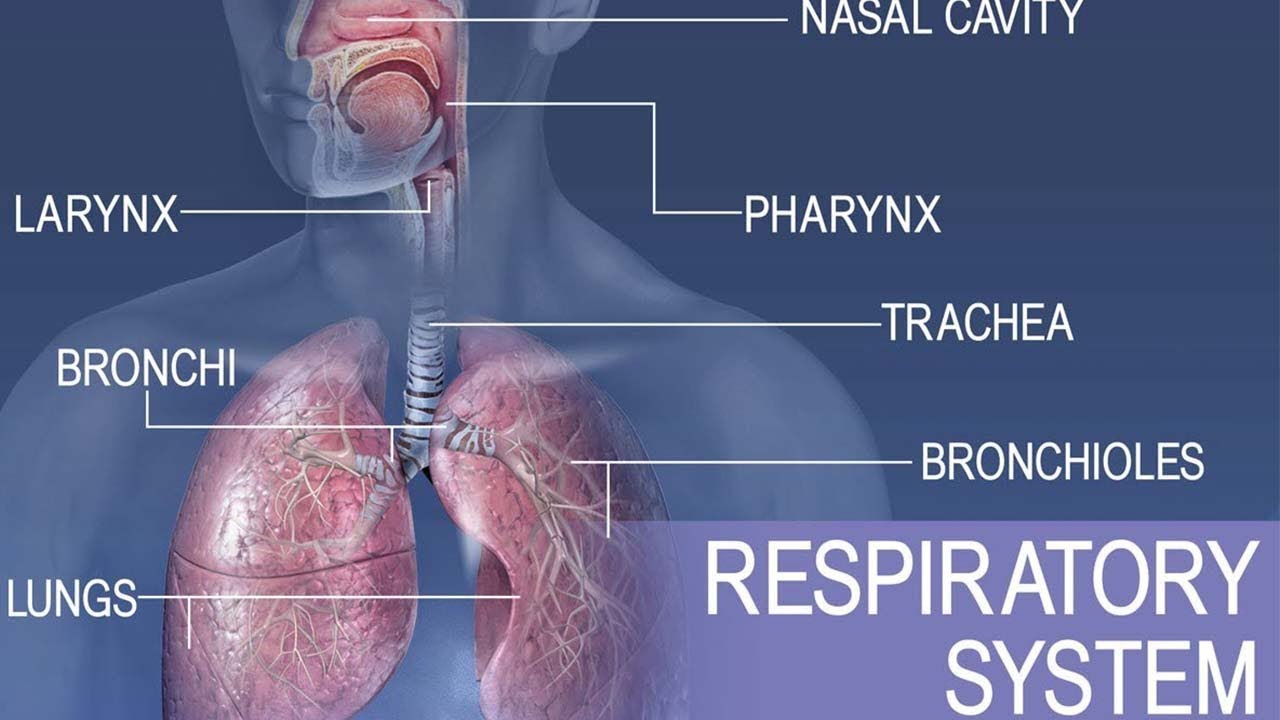Sistem Pernapasan dan Penyakit Sistem Pernapasan Manusia dan Hewan | IPA | SayaBisa
Summary
TLDRThis educational video script explores the intricate details of human and animal respiratory systems. It explains how humans breathe, highlighting the importance of various organs like the nose, throat, trachea, bronchi, and lungs. The video further delves into how animals, including mammals, birds, reptiles, amphibians, and insects, adapt their respiratory processes to suit their environments. From the lung-based breathing of mammals to the unique adaptations of insects and amphibians, this script highlights the diversity and complexity of respiratory systems across species.
Takeaways
- 😀 Humans, animals, and plants need oxygen to live, and breathing involves a coordinated effort of various organs working together in the respiratory system.
- 😀 The human respiratory system consists of several organs including the nose, larynx, trachea, bronchi, and lungs, with each playing a key role in air filtration and oxygen delivery.
- 😀 The nose is important for filtering the air, as it has mucus and fine hairs that trap dust, dirt, and germs, and it helps regulate the temperature and humidity of the air entering the lungs.
- 😀 The trachea and bronchi function as pathways to direct air into the lungs, where oxygen and carbon dioxide are exchanged in the alveoli.
- 😀 Breathing can be classified into two types: chest (thoracic) breathing and abdominal (diaphragmatic) breathing, each involving different muscle groups and mechanisms.
- 😀 Respiratory diseases such as influenza, tuberculosis (TBC), bronchitis, and pneumonia can affect the respiratory system, often requiring treatment and preventive measures.
- 😀 Influenza is a contagious disease with symptoms like fever, joint pain, and cold-like symptoms, while tuberculosis is a contagious lung infection that requires isolation and special care.
- 😀 Respiratory diseases can be prevented by avoiding air pollution, not smoking, staying away from smokers, and boosting immune health through proper nutrition and regular exercise.
- 😀 Animals also have unique respiratory systems that adapt to their environments, such as mammals breathing with lungs, fish using gills, birds having air sacs for efficient flight, and amphibians breathing through both skin and lungs.
- 😀 Each species has developed specific adaptations like gills in fish, air sacs in birds, and skin respiration in amphibians and worms, which allow them to thrive in their respective habitats.
Q & A
What is the function of the hair-like structures in the nose?
-The hair-like structures in the nose filter the air, trapping dust, dirt, and harmful germs to prevent them from entering the respiratory system.
What is the role of the diaphragm in abdominal breathing?
-The diaphragm contracts during abdominal breathing, flattening out and expanding the chest cavity, which allows the lungs to fill with air. Upon relaxation, the diaphragm curves up, pushing air out of the lungs.
What are the key differences between chest and abdominal breathing?
-Chest breathing involves the movement of the ribs and intercostal muscles to expand the chest and lungs, while abdominal breathing involves the movement of the diaphragm. Chest breathing is common when the body is at rest, while abdominal breathing is deeper and occurs when more air is needed.
How do fish breathe underwater?
-Fish breathe by using gills that filter oxygen from the water. The water flows through their mouths and exits through the gills, where oxygen is absorbed into the blood and carbon dioxide is expelled.
What is the special feature of the respiratory system in birds?
-Birds have a unique respiratory system that includes air sacs, or 'pockets of air', which help them maintain efficient breathing during flight by storing air for a continuous exchange of gases.
How do mammals that live in water breathe?
-Water mammals, such as dolphins and whales, breathe using lungs. They have a special valve on their nostrils that closes while submerged and opens when they surface to take in air.
What happens in the alveoli of the lungs?
-In the alveoli, oxygen is exchanged with carbon dioxide in the blood. This is the primary site where oxygen enters the bloodstream and carbon dioxide is removed.
What makes the respiratory system of amphibians like frogs unique?
-Amphibians like frogs breathe using both their lungs and their skin. While they are tadpoles, they use gills to breathe, but as they mature, they develop lungs and continue to use their skin for oxygen absorption.
How does the respiratory system of insects function?
-Insects breathe through spiracles, which are small openings along their bodies, connected to a network of tracheal tubes that transport oxygen directly to their cells.
Why do humans need to take care of their respiratory system?
-Humans must maintain their respiratory system by avoiding air pollution, not smoking, covering their mouth and nose when coughing or sneezing, and maintaining a healthy lifestyle to ensure the efficient exchange of gases in the lungs and overall health.
Outlines

This section is available to paid users only. Please upgrade to access this part.
Upgrade NowMindmap

This section is available to paid users only. Please upgrade to access this part.
Upgrade NowKeywords

This section is available to paid users only. Please upgrade to access this part.
Upgrade NowHighlights

This section is available to paid users only. Please upgrade to access this part.
Upgrade NowTranscripts

This section is available to paid users only. Please upgrade to access this part.
Upgrade NowBrowse More Related Video

Os Sistemas do Corpo Humano

Life processes Full chapter | class 10 Animated video | 10th BIOLOGY | ncert #science | Chapter 7

Bagaimana Kamu Bernapas 👃 - Cerita Animasi

Anatomi dan Fisiologi Manusia | Anfisman | Part 1

Bab 1 PENGENALAN SEL | SPESIALISASI SEL | Jaringan, Organ dan Sistem Organ IPA KELAS 8 #ipakelas8

Anatomy and physiology of Respiratory system
5.0 / 5 (0 votes)